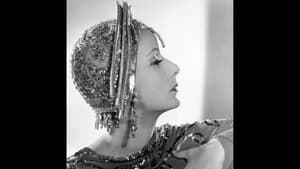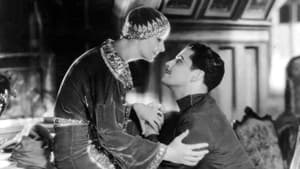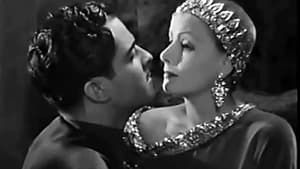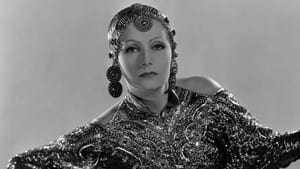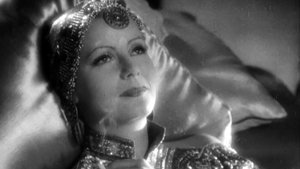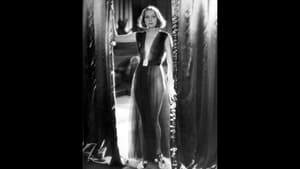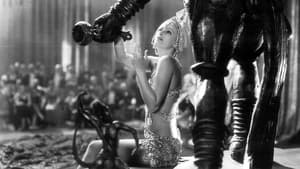Video Sources 0 Views
- Watch trailer
- Mata Hari 1931 Colorized
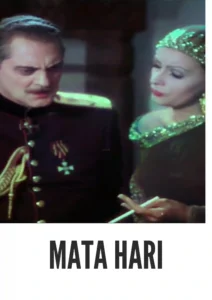
Synopsis
Table of Contents
ToggleSeduction, Espionage, and Intrigue: Mata Hari (1931) in Stunning Color

Enter the glamorous and treacherous world of World War I espionage with Mata Hari, a captivating spy drama classic from 1931, now beautifully colorized for a viewing experience like never before. This film, famous for Greta Garbo’s iconic portrayal of the enigmatic dancer and spy, captures the allure and danger of a woman caught between nations. Perfect for classic film enthusiasts and those drawn to tales of intrigue and romance, this HD download brings a piece of Hollywood legend to your screen.
Mata Hari Storyline: A Web of Secrets and Seduction
Mata Hari tells the story of Margaretha Zelle, a Dutch exotic dancer who rises to fame in Paris under the stage name Mata Hari. As World War I erupts, she becomes embroiled in a dangerous game of espionage, using her beauty and charm to seduce high-ranking military officials and gather intelligence for both the French and the Germans.Torn between her loyalty to her adopted country and her passionate love affair with a young Russian pilot, Lieutenant Alexis Rosanoff (Ramon Novarro), Mata Hari finds herself in an increasingly precarious position. As suspicions mount and the stakes rise, she is eventually unmasked as a spy and faces the ultimate consequences. The film explores themes of love, betrayal, patriotism, and the moral complexities of war. Ultimately, Mata Hari is a tragic tale of a woman who lived life on her own terms, but whose choices led to her downfall.
Movie Cast
The film features a stellar cast of actors who bring this tale of intrigue to life:
- Greta Garbo as Mata Hari
- Ramon Novarro as Lieutenant Alexis Rosanoff
- Lionel Barrymore as General Serge Shubin
- Lewis Stone as Andriani
- C. Henry Gordon as Dubois
Movie Genre
Mata Hari falls into the genre of spy drama, with elements of romance, historical fiction, and tragedy. Greta Garbo’s performance elevates it to a timeless classic.
Historical Context: Glamour and Espionage During Wartime
Released in 1931, Mata Hari capitalized on the public’s fascination with espionage and the romanticized image of spies during World War I. The film draws inspiration from the real-life story of Mata Hari, though it takes significant liberties with historical accuracy. It reflects the anxieties and uncertainties of the interwar period, a time when nations were still grappling with the aftermath of the Great War. The film’s glamorous depiction of espionage offered a form of escapism, while also tapping into deeper anxieties about betrayal and the human cost of conflict.
Colorization Details
This colorized version of Mata Hari has been meticulously restored using modern digital techniques, enhancing the visual appeal while preserving the film’s original atmosphere of glamour and intrigue. The colorization process involved carefully analyzing the grayscale tones of the original black and white footage and assigning appropriate colors to each scene. While the specific software used remains proprietary, the techniques employed included advanced algorithms for color palette selection and image enhancement. This painstaking process brings new life to the characters and settings, making the story even more engaging for modern audiences. While some may debate the merits of colorizing classic films, it introduces these films to a broader audience, ensuring their legacy for future generations.
Technical Details
- Director: George Fitzmaurice
- Screenplay: Benjamin Glazer, Leo Birinski, Doris Anderson
- Story: Benjamin Glazer, Leo Birinski
- Cinematography: William H. Daniels
- Edited by: Blanche Sewell
- Production Company: Metro-Goldwyn-Mayer (MGM)
- Distributed by: Metro-Goldwyn-Mayer (MGM)
- Runtime: 99 minutes
Technical Specifications
- Download Format: MP4
- Resolution: HD (1080p)
- Compatibility: Compatible with most devices, including smartphones, tablets, computers, and smart TVs.
Reviews and Critical Reception
Mata Hari (1931) is celebrated for Greta Garbo’s unforgettable performance, which cemented her status as a Hollywood icon. The film’s glamorous sets, costumes, and intriguing storyline made it a box office success. While historical accuracy is questionable, the film’s dramatic flair and Garbo’s magnetic presence continue to captivate viewers. As Variety noted in its original review, “Garbo gives a socko performance”. The film remains a testament to the allure of classic Hollywood and the enduring power of a captivating screen presence. George Fitzmaurice’s direction creates a visually stunning and emotionally engaging experience.
FAQs
- Q: What is Mata Hari about?
- A: Mata Hari is a spy drama about an exotic dancer who becomes entangled in a web of espionage during World War I.
- Q: Is Mata Hari (1931) based on a true story?
- A: Yes, Mata Hari is loosely based on the life of Margaretha Zelle, a Dutch dancer executed for espionage during World War I, though the film takes significant liberties with historical events.
- Q: Is this version of Mata Hari colorized?
- A: Yes, this version has been professionally colorized to enhance the viewing experience.
- Q: What makes Greta Garbo’s portrayal of Mata Hari so iconic?
- A: Greta Garbo’s magnetic screen presence, enigmatic persona, and ability to convey both strength and vulnerability made her portrayal of Mata Hari unforgettable.
- Q: What is the download format?
- A: The download format is MP4, which is compatible with most devices.
- Q: What resolution is the download?
- A: The resolution is HD (1080p), providing a high-quality viewing experience.
Download Now in HD!
Watch Mata Hari Today!
